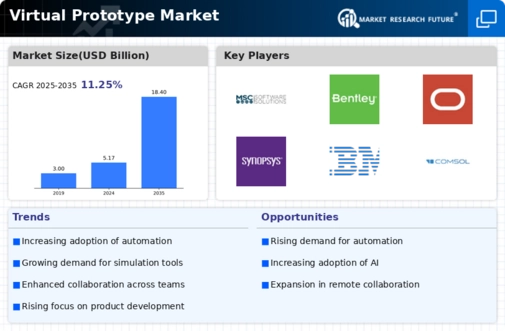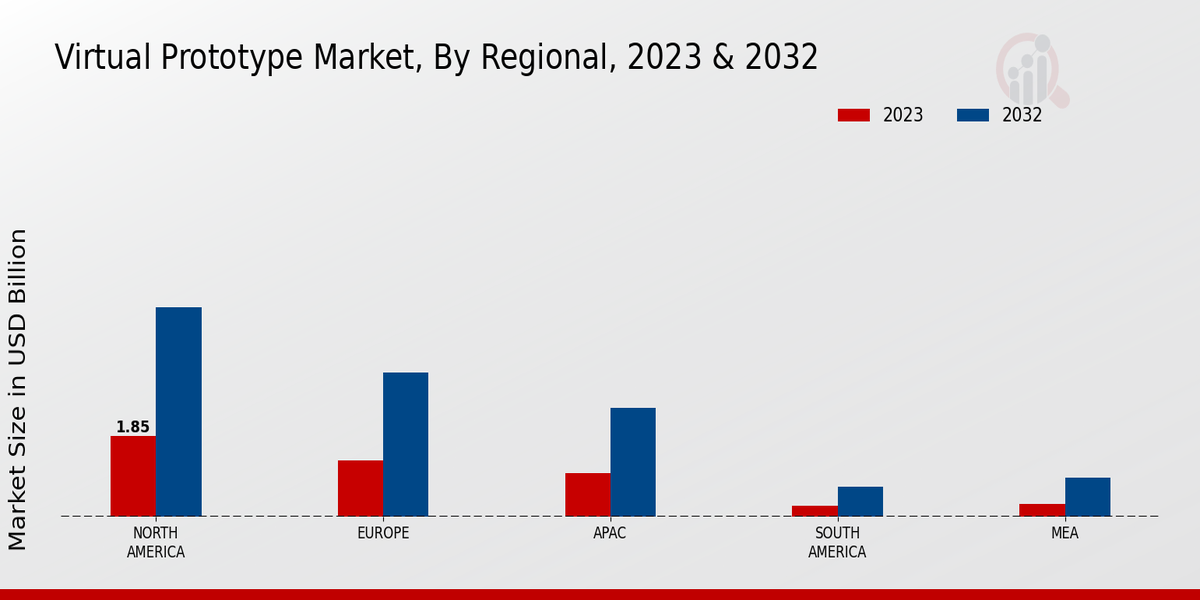Market Growth Projections
The Global Virtual Prototype Market Industry is projected to experience substantial growth over the coming years. With an estimated market value of 5.17 USD Billion in 2024, the industry is expected to expand significantly, reaching 18.4 USD Billion by 2035. This growth trajectory reflects a compound annual growth rate (CAGR) of 12.21% from 2025 to 2035. Such projections indicate a robust demand for virtual prototyping solutions across various sectors, driven by technological advancements and increasing adoption rates. The anticipated growth underscores the importance of virtual prototypes in enhancing product development efficiency and innovation.
Regulatory Compliance and Standards
Regulatory compliance and standards play a crucial role in shaping the Global Virtual Prototype Market Industry. As industries face stringent regulations regarding product safety and performance, virtual prototyping offers a means to ensure compliance during the design phase. By simulating real-world conditions, companies can validate their designs against regulatory requirements, reducing the risk of costly recalls and redesigns. This proactive approach not only enhances product safety but also fosters consumer trust. The increasing emphasis on compliance is likely to drive the adoption of virtual prototyping across various sectors, reinforcing its importance in modern product development.
Growing Adoption in Emerging Markets
The Global Virtual Prototype Market Industry is witnessing growing adoption in emerging markets, where industries are increasingly recognizing the benefits of virtual prototyping. Countries in Asia-Pacific and Latin America are investing in advanced manufacturing technologies, leading to a rise in virtual prototype usage. This trend is driven by the need for cost-effective solutions that enhance product quality and reduce development time. As these regions continue to industrialize, the market is expected to expand significantly, contributing to the overall growth of the industry. The increasing focus on innovation in these markets may further accelerate the adoption of virtual prototyping.
Integration of Artificial Intelligence
The integration of artificial intelligence into virtual prototyping is transforming the Global Virtual Prototype Market Industry. AI algorithms enhance the predictive capabilities of prototypes, enabling more accurate simulations and analyses. This integration allows for the identification of design flaws and optimization opportunities that may not be apparent through traditional methods. Industries such as healthcare and manufacturing are particularly benefiting from AI-driven virtual prototypes, leading to improved product outcomes and reduced development cycles. As the market evolves, the anticipated CAGR of 12.21% from 2025 to 2035 indicates a robust growth trajectory fueled by AI advancements.
Technological Advancements in Simulation Tools
Technological advancements in simulation tools significantly drive the Global Virtual Prototype Market Industry. Innovations in software capabilities, such as enhanced graphics and real-time rendering, enable more accurate and detailed virtual prototypes. These advancements facilitate better visualization and analysis, allowing engineers and designers to make informed decisions. As a result, industries like consumer electronics and machinery are increasingly leveraging these tools to optimize their design processes. The market's growth trajectory suggests that by 2035, it may reach 18.4 USD Billion, underscoring the importance of cutting-edge simulation technologies in shaping future product development.
Rising Demand for Product Development Efficiency
The Global Virtual Prototype Market Industry experiences a surge in demand for enhanced product development efficiency. Companies increasingly adopt virtual prototyping to streamline design processes, reduce time-to-market, and minimize costs. This shift is particularly evident in sectors such as automotive and aerospace, where rapid innovation is crucial. By 2024, the market is projected to reach 5.17 USD Billion, reflecting the growing recognition of virtual prototypes as essential tools for competitive advantage. The ability to simulate and test designs virtually allows organizations to identify potential issues early, thus saving resources and improving overall product quality.
















